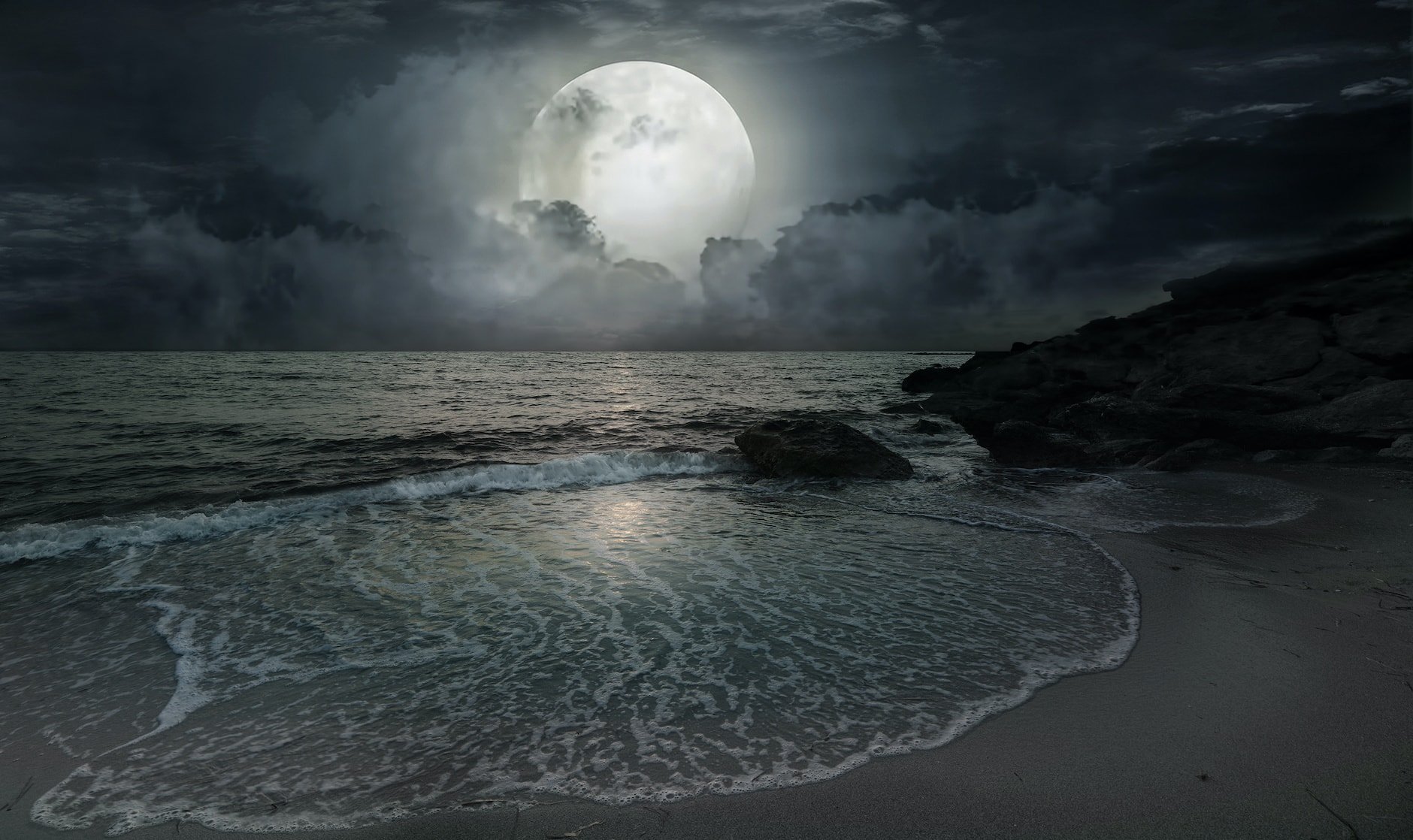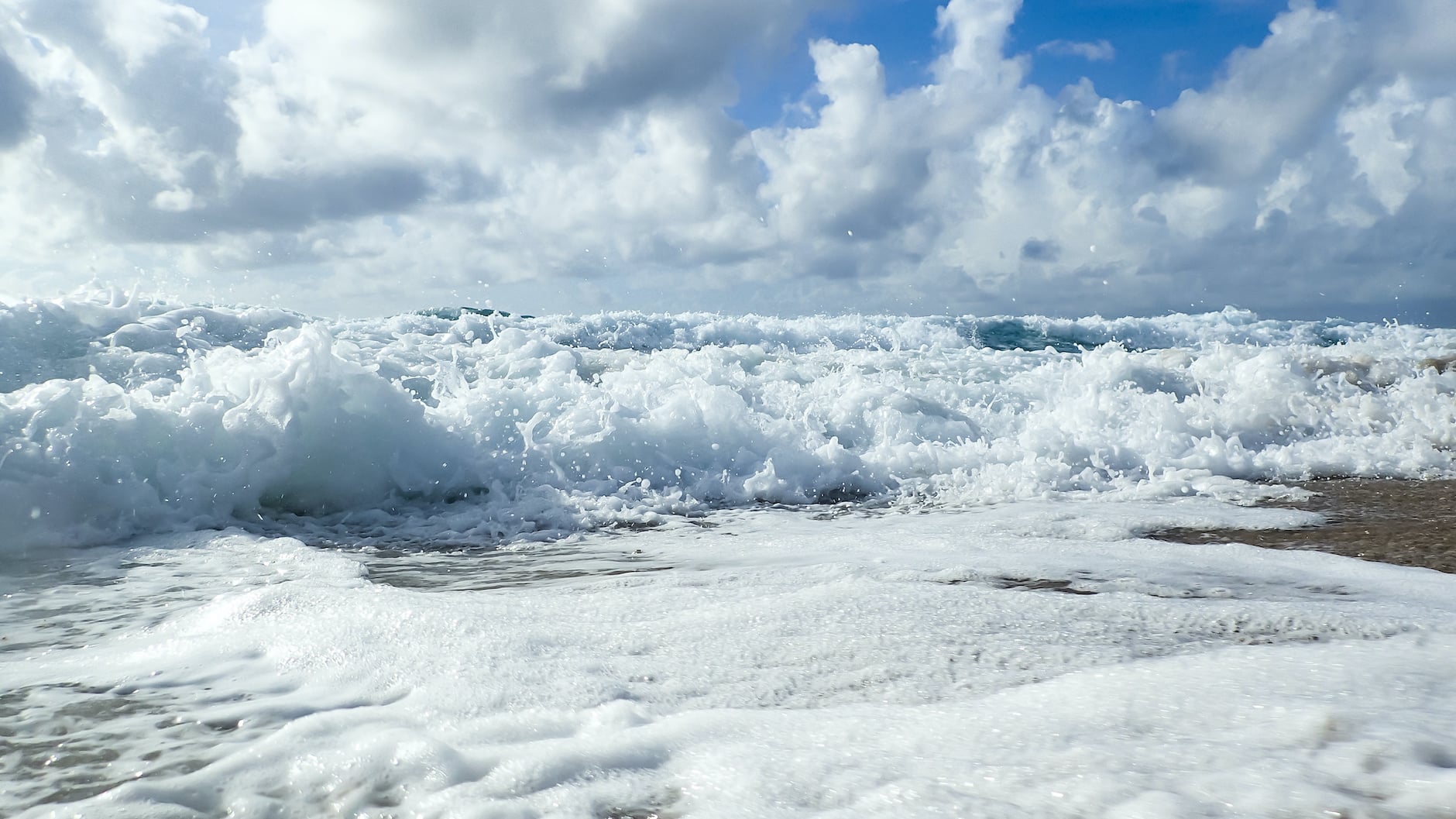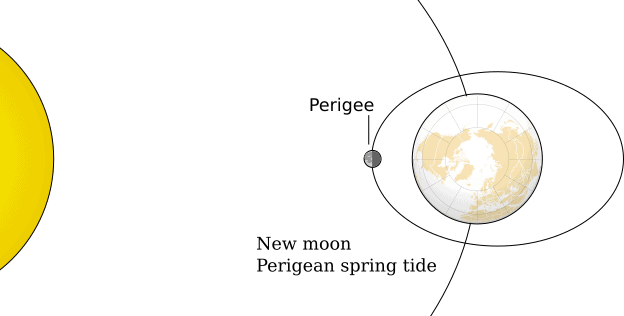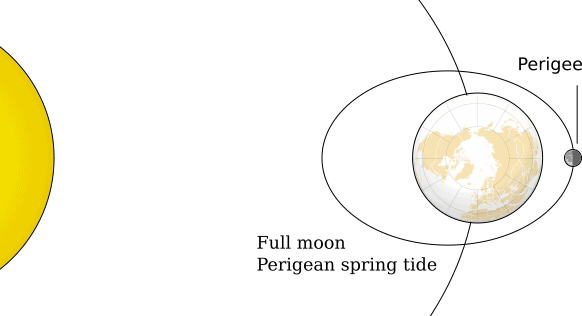How Do Moons Affect The Tide?
A fascinating look at the Moon's influence on Earth's ocean tides.
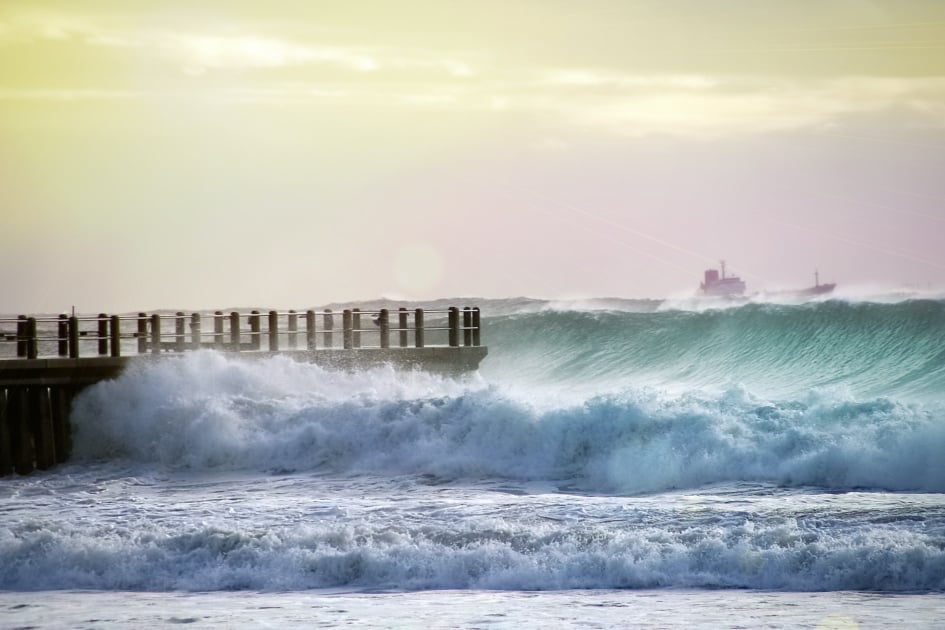
Tides are the natural rise and fall that occurs in major bodies of water, such as the ocean or large lakes. Tides are caused by the gravitational relationship between the Moon and the Earth. The Moon’s gravity pulls on the Earth, causing the water to swell in the direction of the Moon.
When Do We Get High Tides?
The exact timing and number of high tides per day varies by location and is affected by such factors as geography, the shape of the coastline, the salinity of the water, the time of year, and the weather, among other things. On average, though, most coastal areas experience one high tide every 12 and 1/2 hours, or about twice per day.
But if the Earth revolves on its axis once per day, why do most areas have two high tides per day? One high tide happens at a specific longitude when the Moon is aligned with that area. A second high tide occurs on the opposite side of the Earth. Because the Earth gets pulled, ever so slightly, toward the Moon, the water on the opposite side gets “left behind” and bulges out in the opposite direction. This secondary tide isn’t usually as high as the one caused directly by the Moon.
What Determines High Tide or Low Tide?
The height of the tides is also affected by the position of the Moon in its orbit around the Earth. The Moon travels around the Earth once every 29+ days. Depending on where it is on its journey, the difference between high and low tide may be more or less pronounced.
Spring Tides and Neap Tides
A more pronounced tide, when high tides are very high and low tides are very low, is called a “spring tide.” These periods occur during the new Moon phase—when the Sun and Moon are lined up on the same side of the Earth, and the full Moon phase—when the Moon and Sun are on opposite sides of the Earth.
Less pronounced tides, called “neap tides,” occur when the Sun and Moon are perpendicular, forming a right angle with the Earth at its apex. Neap tides occur because the pull of the Sun and Moon are pulling from different directions, creating a balancing effect.
Thank Issac Newton
Sir Isaac Newton was the first to theorize that the Moon is responsible for the tides. He published his explanation in the second volume of his Philosophiae Naturalis Principia Mathematica in 1687.

Jaime McLeod
Jaime McLeod is a longtime journalist who has written for a wide variety of newspapers, magazines, and websites, including MTV.com. She enjoys the outdoors, growing and eating organic food, and is interested in all aspects of natural wellness.

